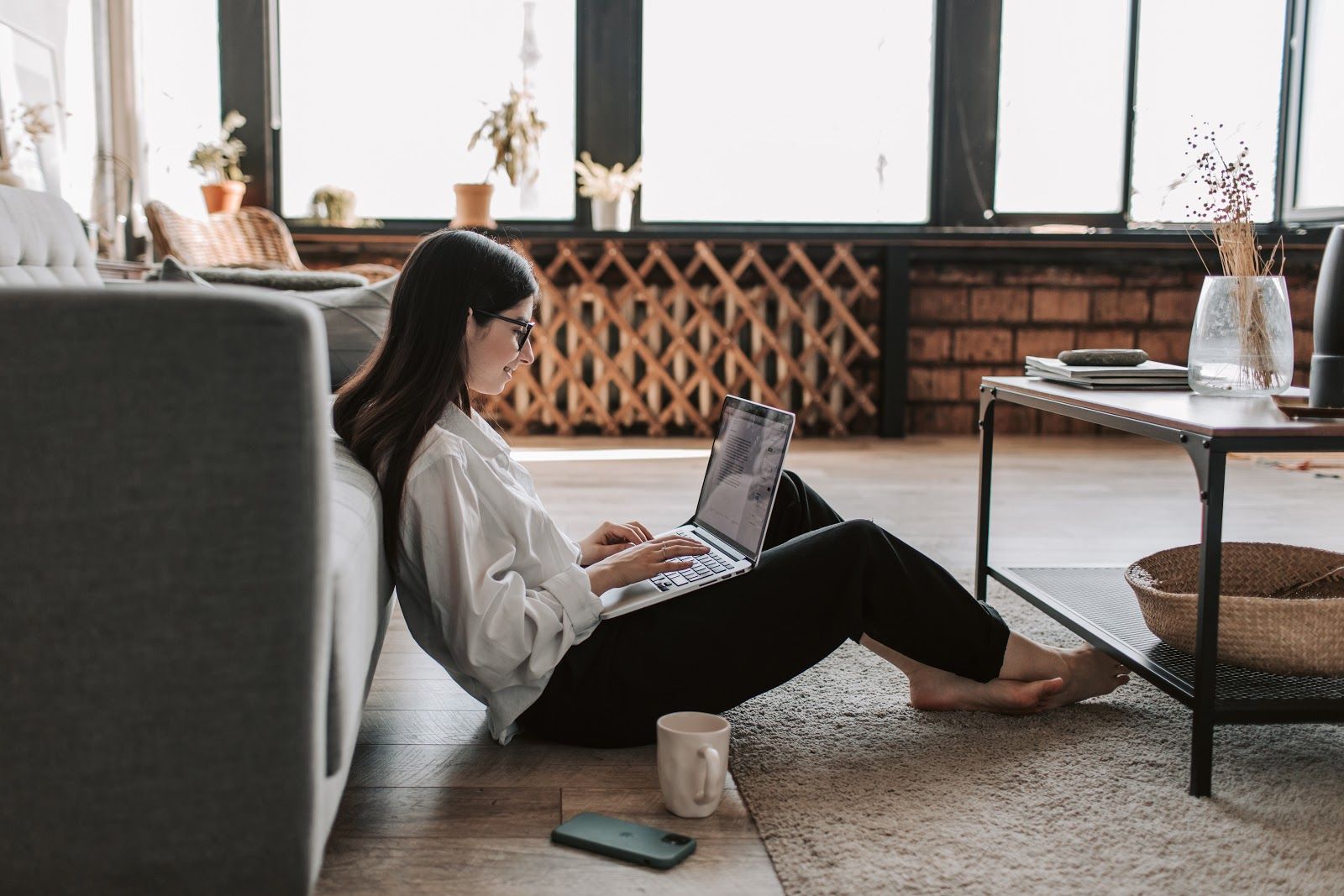Home working without the pain!

You’re in pain. Parts of your body are aching all the time, you feel stiff. You’re struggling to sleep, waking up feeling uncomfortable, bending to the washing machine is a struggle and you’re not enjoying getting on the floor to play with your kids. How has this happened so quickly?
Well, you’re sitting at home all day, working hard, keeping your head down and ploughing on so you can get it all done and then finish. But, a bit of extra work comes in and you think you’ll just get that bit done too, try and start with a clear desk tomorrow. Then the boss calls and asks you to just take a look at something, it’ll only take 10 minutes.
Before you know it you’ve been working for 9 or 10 hours instead of 8 and by the time you get up to move you’re stiff and in pain. And it’s late, so you’re hungry and tired, you don’t fancy that walk you planned, you just want to eat and watch tv to relax. Then you get up early the next morning, intending to get it all done and finish early…and it starts all over again!
Then you add to this scenario that you’re not at your work desk but at home in a cramped, make-shift office space, or at a dining table, or even working from your sofa, without the right computer screen and chair and space that you’re used to. That’s a pretty sorry looking working environment and before you know it you’re in trouble. Things are starting to hurt, you’re not sleeping so well, and you’re becoming less productive in your job, making the whole thing even worse.

STOP! Let’s break this cycle now. Take a moment to step back and look at what’s happening and work out what and how you can improve in this situation.
-
Location…is there somewhere better you could be working? Sitting with a laptop on the sofa might seem like a bit of a treat to start with but it’s bad news for your back and neck in the long term.
You need at the least to be sat on a chair at some sort of table. If necessary you can order a reasonable desk quite cheaply and have it delivered, so even if it ends up in the charity shop or the kids bedroom when you don’t need it any more, it’s well worth the small expense and disruption to the normal flow of your household furniture.
Consider what the lighting is like in your chosen spot as dim lighting or light shining on your computer screen can cause you to strain to see, which is physically demanding and exhausting.
-
At your desk…If you are sitting on a hard chair, like a dining chair for example, there are two things to consider. First the height of the table, if you can’t alter your chair height you may not be at a good height for working at a computer.
Secondly the base of a chair like that has no flexibility and is hard on your back and bottom! So, sit on a cushion or ideally invest in an inflatable cushion, like the Sissel Sitfit. This means that you stay more mobile and the pressure is not constantly on one part of your pelvis and the effort is not all being done by the same muscles hour after hour. These are great to use even in a normal office chair.
You should be able to sit squarely on your chair with your bottom towards the back of the seat, feet planted firmly on the floor, or on a foot rest, able to use the back of the chair to support your back. If you have to perch on the edge of the seat this is going to create a lot of pressure in a line across the top of your thighs and will get painful in your legs and back and be bad for blood circulation.
-
Help your neck…If you can get the seat height right you have more chance of having your neck in a better position. But working on a laptop can make it hard to maintain good posture. It might help to buy a separate bluetooth keyboard and then raise your
laptop up so the screen is eye-level. Raising it using a proper laptop stand is ideal but if this isn’t possible use some books instead. Then you aren’t spending all your time with your neck at an uncomfortable angle or building tension and pain in your neck and shoulders.Ask your employer if they can help with the cost of buying a few bits of office furniture for your home that will make life a lot easier, and stress to them how much more productive you will be if you’re not in pain!
-
Get up and move…! Don’t sit for hours working away without moving. Make the most of being at home, being able to get up and move around, make yourself a drink, put some washing on, go into the garden. Just take 5 minutes in every hour to move away
from your work space This isn’t shirking, it’s stimulating your blood flow to your brain, refreshing you, easing aches and pains and making you more productive and less uncomfortable. -
Move in your chair…I call this planned fidgeting! Incorporate bending forwards, backwards, sideways and rotation to get your muscles moving and stimulate circulation. Look out for my next blog including a simple seated exercise routine that you can follow in 1-2 minutes every hour.
-
Don’t work extra hours…Routinely working extra hours, especially in a less than ideal environment, is a recipe for pain. If you are starting early in the morning to get it all done and plan to finish an hour early then make sure you do just that. If you are strict with your hours you will have more time to…
-
Go for a walk/bike-ride/run…do some gardening, play with the children, call friends and family, relax. You NEED to do this in order to keep yourself happy and healthy and release stress and tension and to sleep well. When you have put all this into place I hope you’ll be feeling a lot better, with less pain and moving more easily. But, if your pain is taking over don’t leave it to get worse, click to make an online appointment today.
Keep working smart!
Claire Terry D.O.
www.tonbridgeosteopathicclinic.co.uk
Find me on Facebook and Instagram
